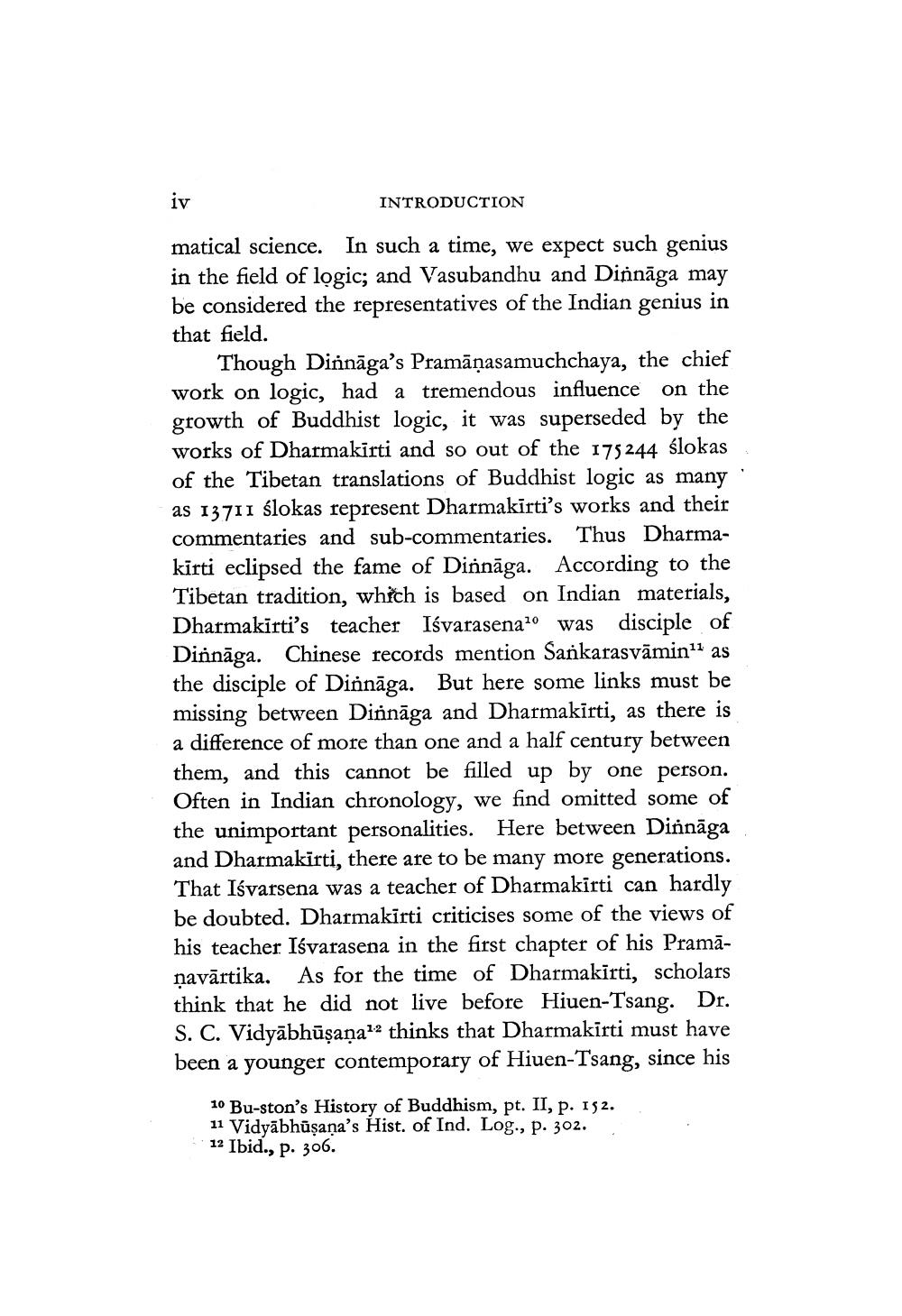________________
iv
INTRODUCTION
matical science. In such a time, we expect such genius in the field of logic; and Vasubandhu and Dirnāga may be considered the representatives of the Indian genius in that field.
Though Dinnāga's Pramāṇasamuchchaya, the chief work on logic, had a tremendous influence on the growth of Buddhist logic, it was superseded by the works of Dharmakirti and so out of the 175244 ślokas of the Tibetan translations of Buddhist logic as many as 13711 ślokas represent Dharmakirti's works and their commentaries and sub-commentaries. Thus Dharmakirti eclipsed the fame of Dinnāga. According to the Tibetan tradition, which is based on Indian materials, Dharmakīrti's teacher Iśvarasenało was disciple of Dinnāga. Chinese records mention Sankarasvāmin as the disciple of Dirnāga. But here some links must be missing between Dinnāga and Dharmakīrti, as there is a difference of more than one and a half century between them, and this cannot be filled up by one person. Often in Indian chronology, we find omitted some of the unimportant personalities. Here between Dinnāga and Dharmakirti, there are to be many more generations. That Isvarsena was a teacher of Dharmakirti can hardly be doubted. Dharmakīrti criticises some of the views of his teacher Iśvarasena in the first chapter of his Pramāņavārtika. As for the time of Dharmakirti, scholars think that he did not live before Hiuen-Tsang. Dr. S. C. Vidyābhūşana?thinks that Dharmakīrti must have been a younger contemporary of Hiuen-Tsang, since his
10 Bu-ston's History of Buddhism, pt. II, p. 152. 11 Vidyābhūşana's Hist. of Ind. Log., p. 302. 12 Ibid., p. 306.




